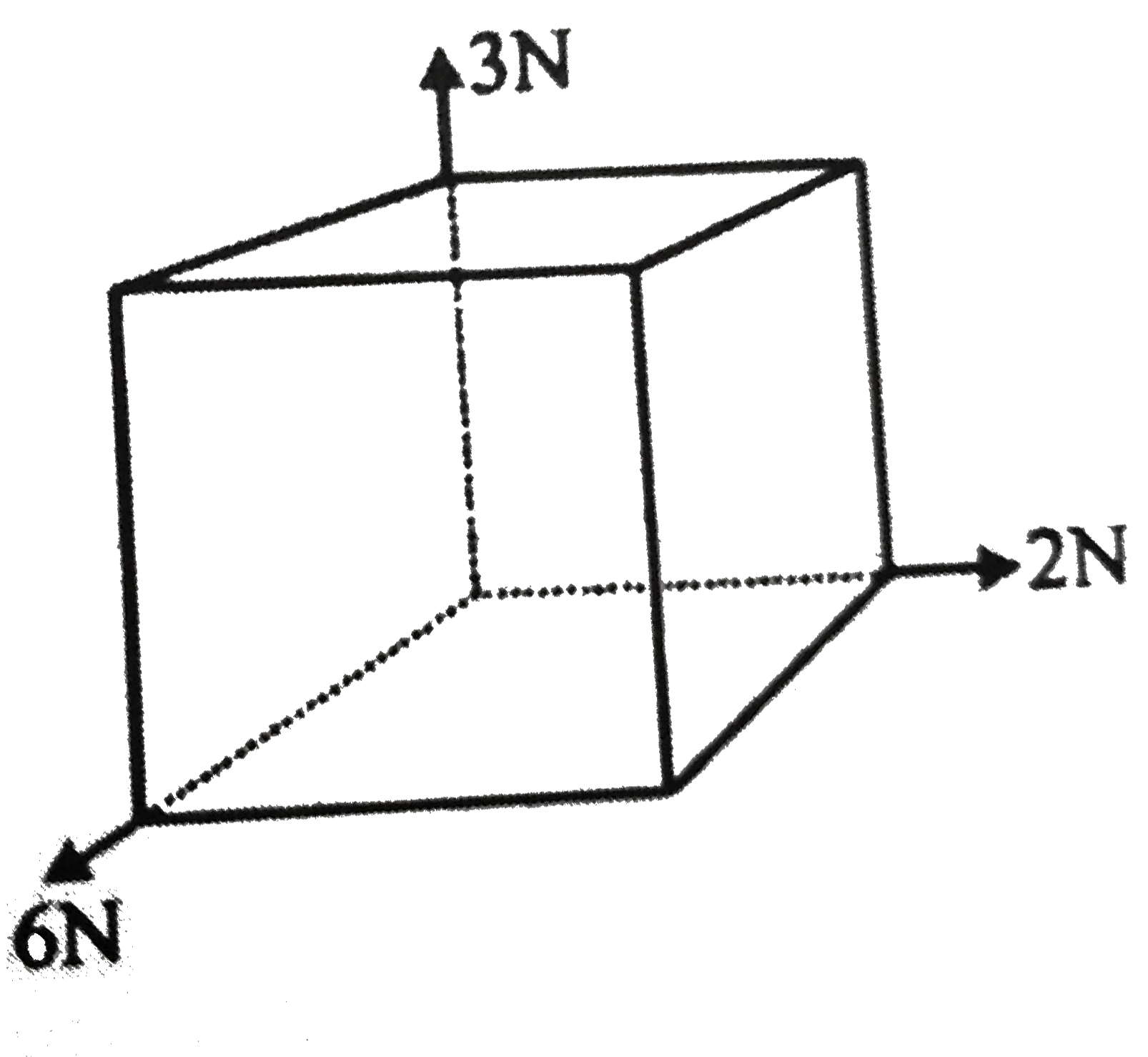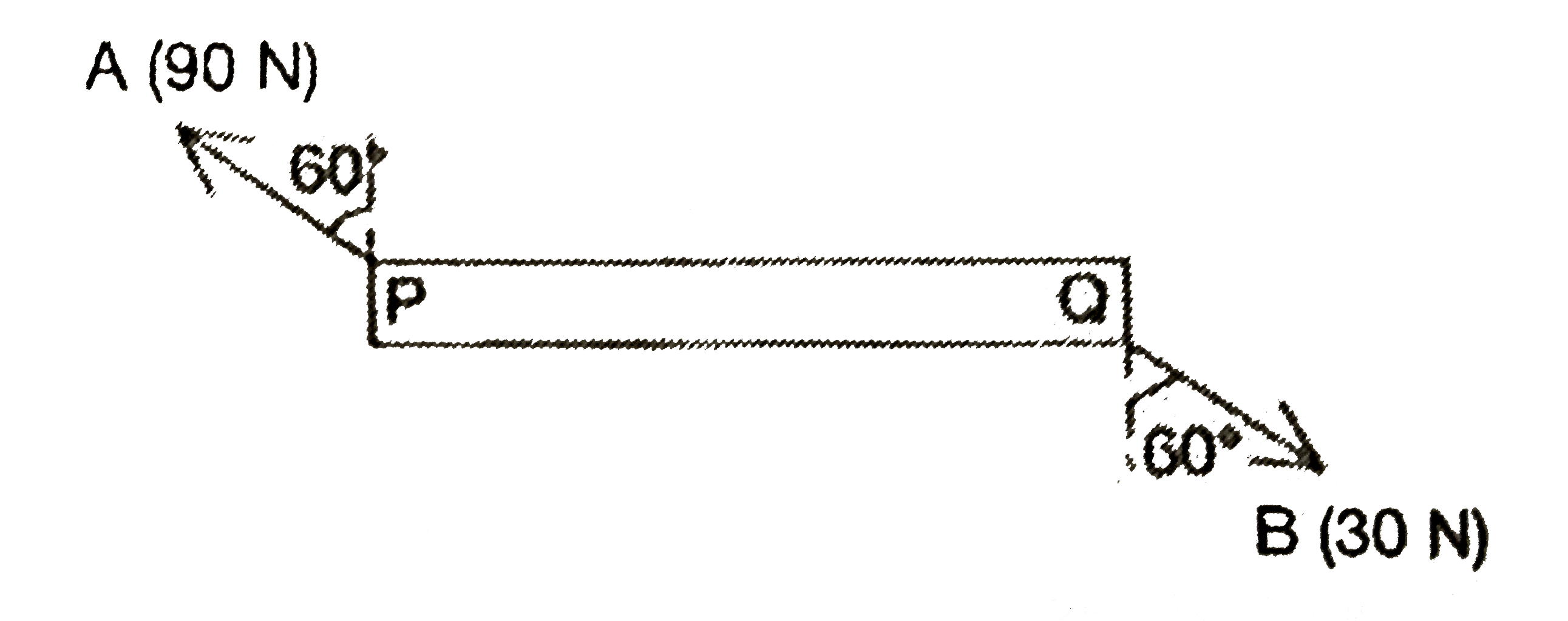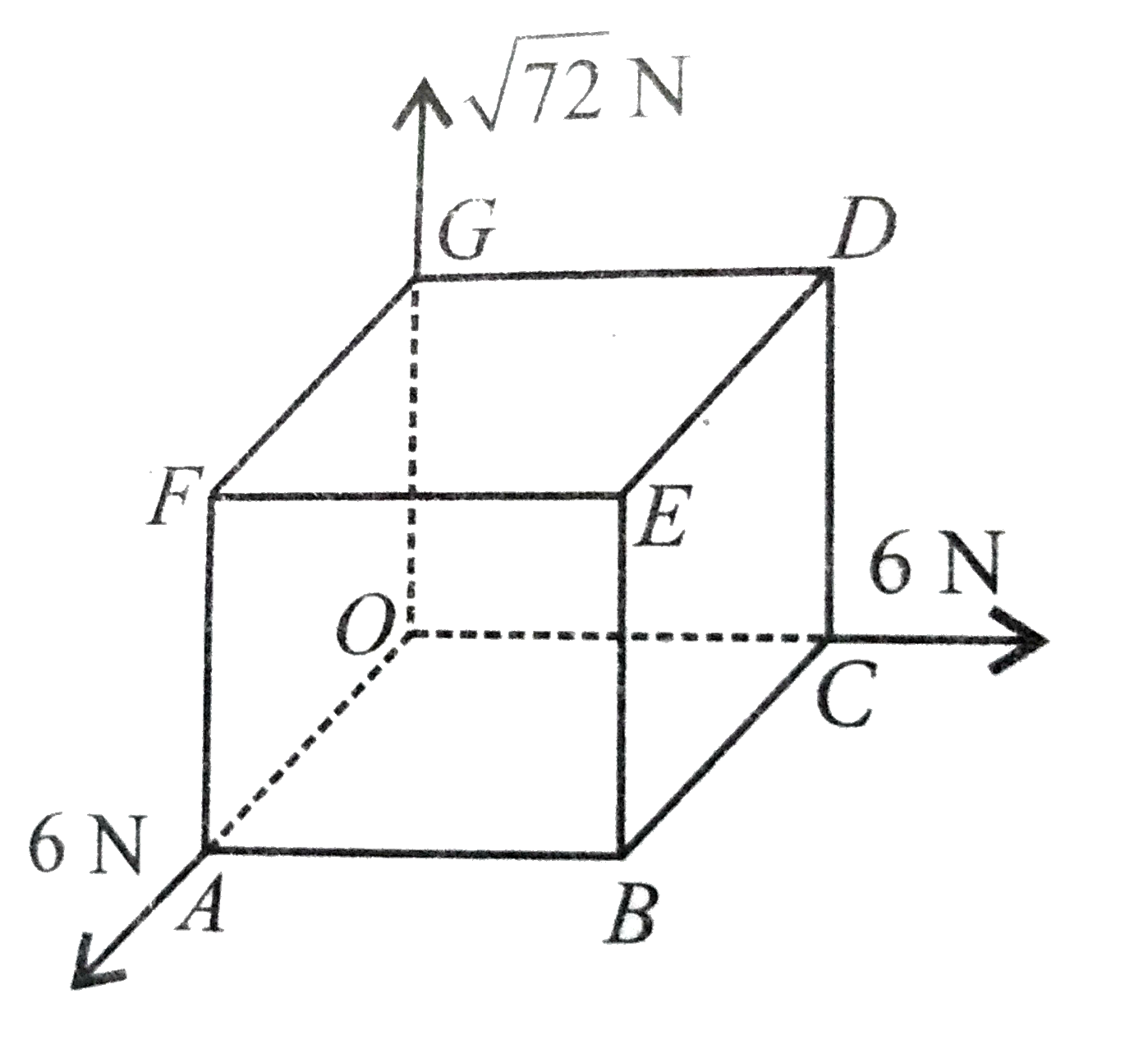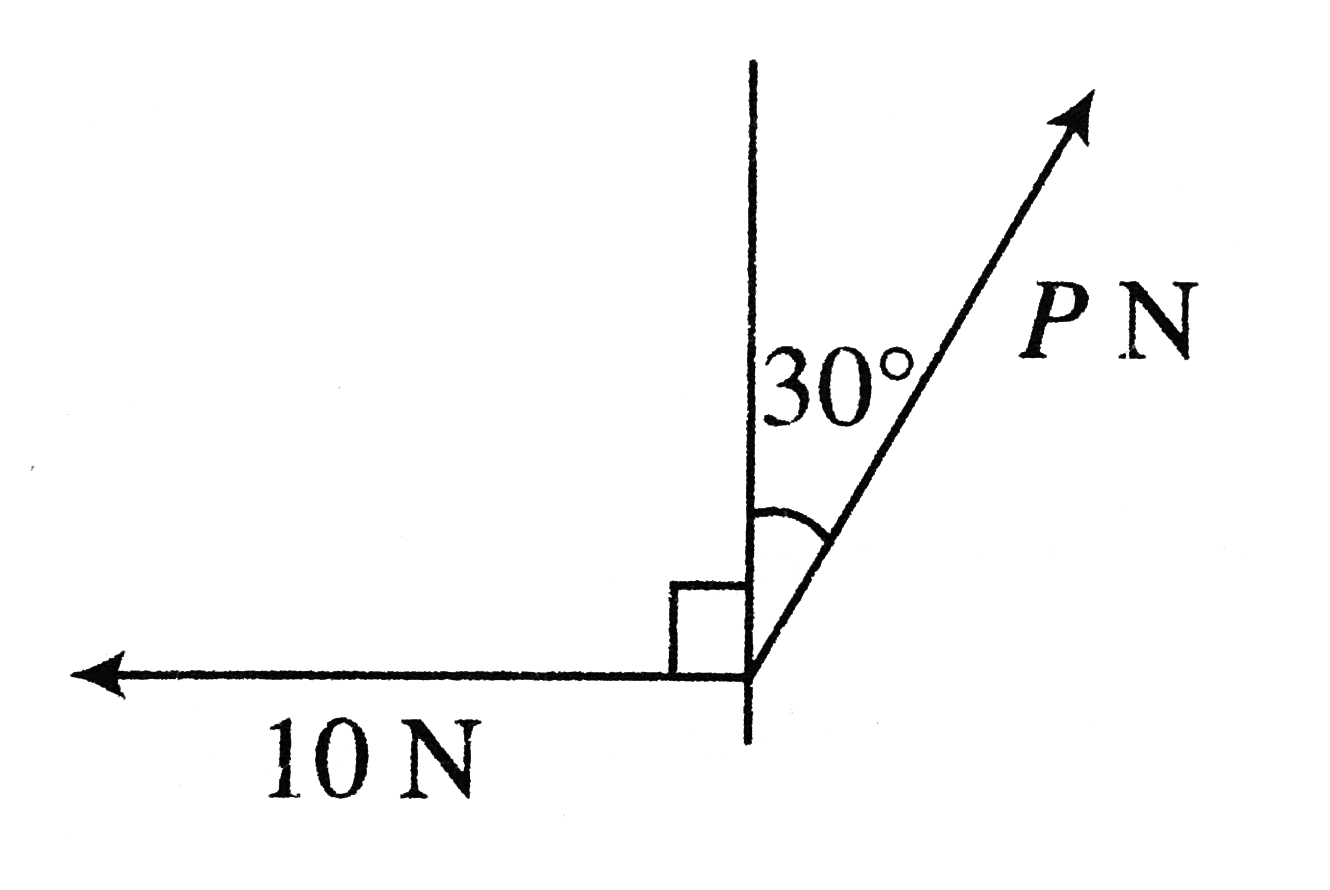Three ant P,Q and R are pulling a grain with forces of magnitude 6N,3√3N and 3√2N as shown in the figure. Find the magnitude of resultant force (in N ) acting on the grain .
 Solution in Gujrati
Solution in Gujrati
The correct Answer is:3
Step by step video & image solution for Three ant P,Q and R are pulling a grain with forces of magnitude 6N,3sqrt(3) N " and " 3sqrt(2)N as shown in the figure. Find the magnitude of resultant force (in N ) acting on the grain . by Physics experts to help you in doubts & scoring excellent marks in Class 12 exams.
Updated on:21/07/2023Topper's Solved these Questions
- UNIT & DIMENSIONS, BASIC MATHS AND VECTOR BOOK - ALLEN CHAPTER - UNIT & DIMENSIONS, BASIC MATHS AND VECTOR EXERCISE - Exercise (S-2)
7 Videos
- UNIT & DIMENSIONS, BASIC MATHS AND VECTOR BOOK - ALLEN CHAPTER - UNIT & DIMENSIONS, BASIC MATHS AND VECTOR EXERCISE - Exercise (O-1) Single Correct Type Questions.
37 Videos
- UNIT & DIMENSIONS, BASIC MATHS AND VECTOR BOOK - ALLEN CHAPTER - UNIT & DIMENSIONS, BASIC MATHS AND VECTOR EXERCISE - Solved Examples
7 Videos
- TEST PAPERSBOOK - ALLEN CHAPTER - TEST PAPERSEXERCISE - MATHS
1 Videos
- WAVE OPTICSBOOK - ALLEN CHAPTER - WAVE OPTICSEXERCISE - Exercise 2 (Previous Year Questions)
7 Videos
Similar Questions
The Vander wal's equation for n moles of a real gas is given by (P+n2aV2)(V−nb)=nRT, where
P pressure of gas, V= volume of gas, T= temperature of gas
R= molar gas constant, a & b= Van der waal's constant
Which of the following have the same dimensions as those of nRT.
View SolutionThe dimensional formula for which of the following pair is not the same ?
View SolutionTwo displacement vectors of same magnitude are arranged in the folllowing manner.

Magnitude of resultant is maximum for
View SolutionIf complex number z(z≠2) satisfies the equation z2=4z+|z|2+16|z|3, then what is the value of |z|4 ?
View SolutionElectromagnetic waves are transverse is nature is evident by
View SolutionFour ants 1,2,3 and 4 are pulling a grain with force of magnitudes 3N,1N,2N and |vec F|N as shown inthe figure.Find force vec F if the grain remains in equilibrium under the action of the above forces.
View SolutionTwo horizontal forces of magnitudes of 10N and P N act on a particle. The force of magnitude 10N acts due west and the force of magnitude P N acts on a bearing of 30^(@) east of north as shown in (figure) The resultant of these two force acts due north. Find the magnitude of the resultant.
View SolutionThree forces of magnitudes 2N, 3N and 6N act at corners of a cube along three sides as shown in figure. Find the resultant of these forces in N.

View SolutionThree ant P,Q and R are pulling a grain with forces of magnitude 6N,3sqrt(3) N " and " 3sqrt(2)N as shown in the figure. Find the magnitude of resultant force (in N ) acting on the grain .
View SolutionA uniform metallic rod AB of length 1.4 m is lifted by two forces P and Q acting along the directions as shown in the figure. If the magnitudes of P and Q are 20 N and 50 N, respectively, find the magnitude and the position of the resultant normal force that acts on the rod.

View SolutionThree forces of magnitudes 6 N, 6 N an d √72 N act at corner of cube along three sides as shown in figure. Resultant of these forces is

View SolutionTwo forces are such that the sum of their magnitudes is 18N and their resultant is 12 N which is perpendicular to the smaller force. Then the magnitude of the forces are
View SolutionThree ants 1, 2 and 3 are pulling a grain with forces of magnitudes 2Nsqrt(3)N and sqrt(2)N and as shown in the figure. Find the resultant force acting on the grain.
View SolutionIf two forces are acting at a point such that the magnitude of each force is 2 N and the magnitude of their resultant is also 2 N, then the angle between the two forces is
View SolutionThree forces of magnitudes 6 N, 6 N an d √72 N act at corner of cube along three sides as shown in figure. Resultant of these forces is

View SolutionTwo horizontal forces of magnitudes of 10N and PN act on a particle. The force of magnitude 10N acts due west and the force of magnitude PN acts on a bearing of 30∘ east of north as shown in (figure) The resultant of these two force acts due north. Find the magnitude of the resultant.

View Solution
